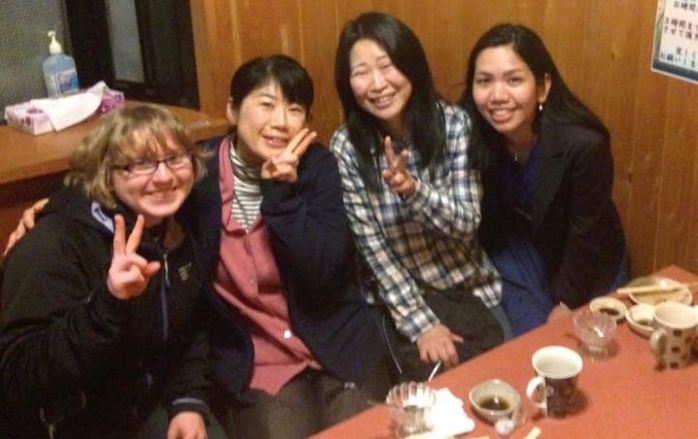This month marked my second year of teaching English in Japanese public schools.

This card says: Sarah-sensei, arigatou! [Thank you, Sarah-sensei!] It feels great to be appreciated by your students.
For instance, Japanese elementary school teachers have to be ready to teach a different grade every school year. While a few teachers get assigned to the same level, most get a different assignment. The fourth grade teacher that I worked with last year is now teaching first graders.
Like most things, there are advantages and disadvantages to this.
The advantages:
1. Teachers won’t get bored because there’s always something new. They have to adjust to teaching a different grade with varying levels of difficulty. They also have to learn how to deal with kids that may be younger or older than their previous students.
2. Teachers won’t have to put up with a challenging class longer than a year, unless they get assigned to be their teacher the following year.
The disadvantages:
1. Having to teach different grades every year deprives teachers of the opportunity to specialize in teaching a particular age. My elementary school teachers in the Philippines have a breadth of knowledge about their assigned grade. They’re also respected by many of their students, parents, and colleagues. Imagine, it’s not unlikely for a teacher to have taught both parent and child.
Varying the teacher’s assignment each year deprives them of having shared memories for many people. It’s nostalgic to go back to school and see how much your Grade 3 classroom has changed. People a decade or more apart in age can also have memories of having the same Grade 6 teacher. This is the same system in the US. But then again, much of the Philippine education system has been patterned from the US’.

It can be quite sad knowing that I might not be able to work again with the person who had this table for a year, a Japanese teacher I’ve come to respect and admire.
That’s not all. All teachers can only stay in the same school for seven years. No matter how much they love a particular school, they have no choice but to transfer to another one after seven years. This also applies to the school secretary who would often sit beside the Vice Principal. Some get transferred after just a year.
In junior high school, teachers typically start the same time with freshmen. They follow the same class every year until they graduate, after which the said teacher will teach a new batch of first year students.
During my time, four years of high school followed right after elementary in the Philippines. It has been that way for decades up until a few years ago when they’ve revised the system to be the same with the US so that students won’t have difficulty pursuing higher education abroad and graduates won’t have employment challenges due to the difference in educational standards.

I go to four schools and work with about 25 teachers. It’s a great bonus to be good friends with some of them.
This coming April, one of the teachers I love working with will be transferring to another school. I hope I’ll still get to work with her because as responsible and dedicated as they are, not all Japanese teachers have the same passion for English.